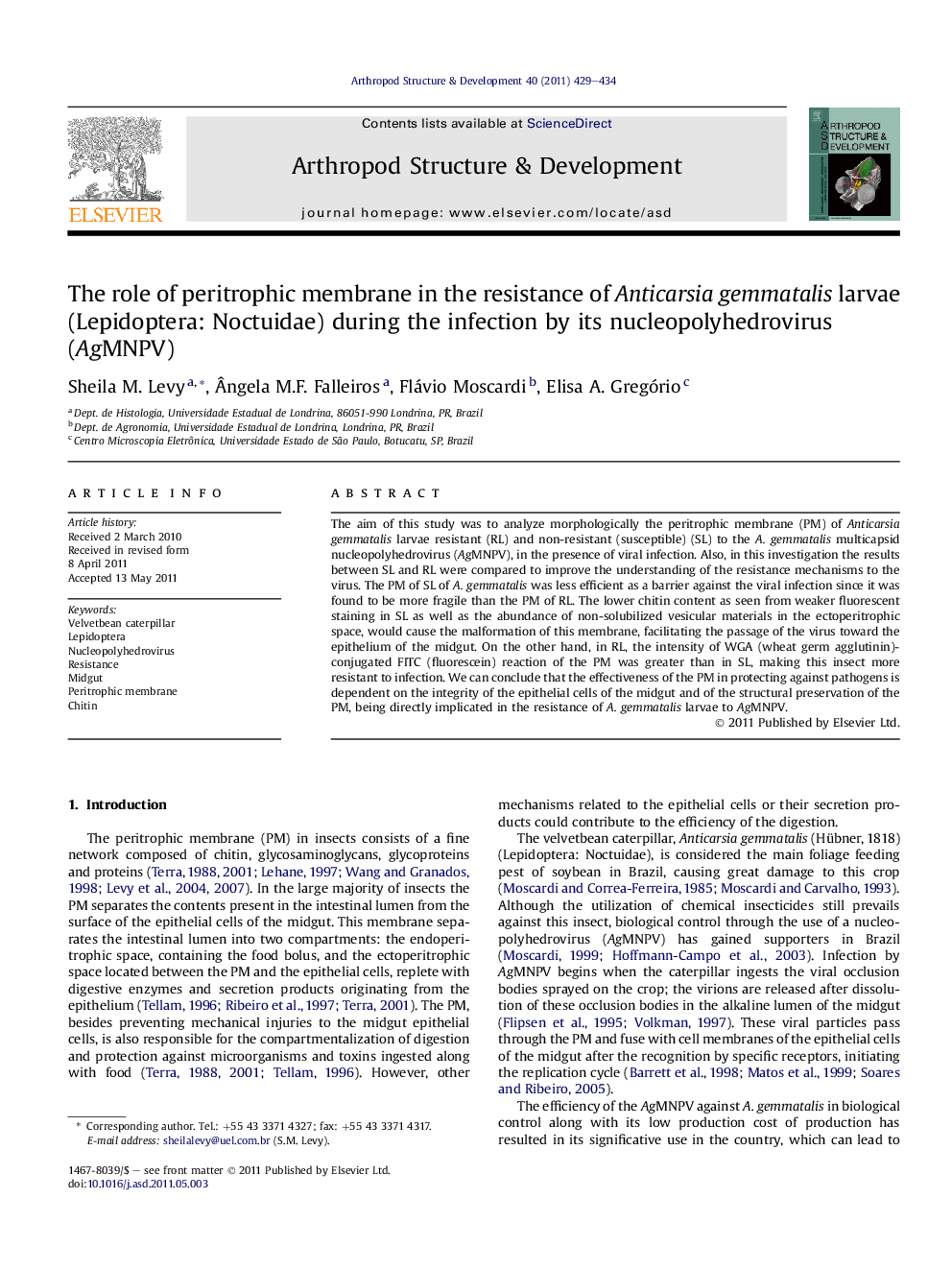| Article ID | Journal | Published Year | Pages | File Type |
|---|---|---|---|---|
| 2778817 | Arthropod Structure & Development | 2011 | 6 Pages |
The aim of this study was to analyze morphologically the peritrophic membrane (PM) of Anticarsia gemmatalis larvae resistant (RL) and non-resistant (susceptible) (SL) to the A. gemmatalis multicapsid nucleopolyhedrovirus (AgMNPV), in the presence of viral infection. Also, in this investigation the results between SL and RL were compared to improve the understanding of the resistance mechanisms to the virus. The PM of SL of A. gemmatalis was less efficient as a barrier against the viral infection since it was found to be more fragile than the PM of RL. The lower chitin content as seen from weaker fluorescent staining in SL as well as the abundance of non-solubilized vesicular materials in the ectoperitrophic space, would cause the malformation of this membrane, facilitating the passage of the virus toward the epithelium of the midgut. On the other hand, in RL, the intensity of WGA (wheat germ agglutinin)-conjugated FITC (fluorescein) reaction of the PM was greater than in SL, making this insect more resistant to infection. We can conclude that the effectiveness of the PM in protecting against pathogens is dependent on the integrity of the epithelial cells of the midgut and of the structural preservation of the PM, being directly implicated in the resistance of A. gemmatalis larvae to AgMNPV.
► The peritrophic membrane of susceptible A. gemmatalis was less efficient as a barrier. ► The intensity of WGA-FITC labeling is greater in resistant larvae. ► The effectiveness of the membrane against pathogens depends on the integrity of the epithelial cells. ► The structural preservation of the membrane implicates in the resistance of A. gemmatalis.
